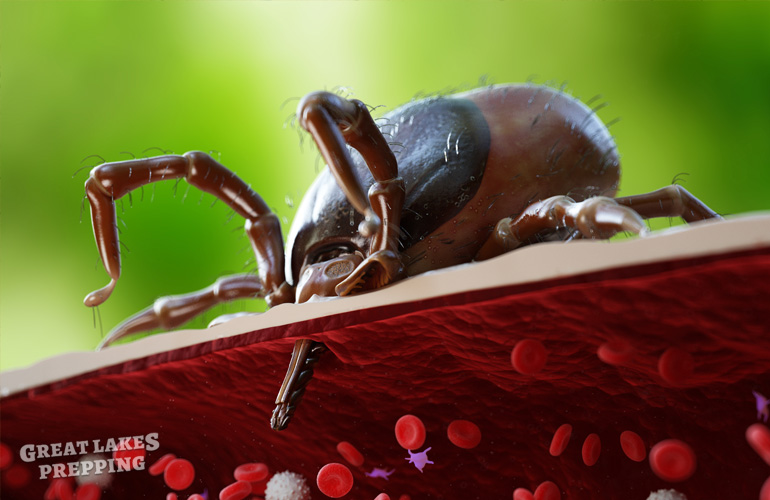Unusual Facts About Ticks in North America

Ticks are tiny, blood-sucking arachnids that have long been the bane of hikers, campers, and outdoor enthusiasts in North America. These small creatures are not only annoying but can also transmit various diseases, making them a concern for human and animal health. While ticks are relatively common and well-known, there are several fascinating and unusual facts about them that may surprise you. In this article, we’ll delve into some of these peculiar aspects of ticks found in North America.
- An Ancient Existence:
Ticks are not newcomers to the world. Fossil evidence indicates that ticks have been around for at least 90 million years. These ancient arachnids have been parasitizing on a wide range of hosts long before humans and many other modern animals evolved. - Spider Cousins:
Ticks belong to the arachnid family, making them close cousins to spiders, scorpions, and mites. Their eight legs and segmented bodies are typical of arachnids, but ticks have a unique feature – their mouthparts. Ticks possess specialized structures called hypostomes that allow them to anchor themselves firmly onto their hosts. - Relentless Quest for Hosts:
Ticks have a fascinating ability to locate their hosts, often relying on the sense of smell and detecting carbon dioxide emitted by warm-blooded animals. They patiently wait on the tips of grasses and shrubs, a behavior known as “questing,” with their legs outstretched, ready to latch onto any passing potential host. - Blood-Lovers and Vampires:
Ticks are obligate blood-feeders, meaning they require blood to complete their life cycle. They feed on a wide variety of hosts, including mammals, birds, reptiles, and even amphibians. While most ticks aren’t particularly picky about their hosts, some species display host-specific preferences. - Long-Haul Feeders:
Ticks are incredibly patient when it comes to feeding. Depending on the species and life stage, they can remain attached to their hosts for days, or even weeks, during a single feeding session. As they feast on their blood meal, their bodies can expand significantly in size. - Impressive Survival Skills:
Ticks are remarkably hardy and resilient creatures. They can survive in a wide range of environments, from temperate forests to arid grasslands. Some ticks can withstand extreme temperatures and can be found active even during colder months, as long as temperatures remain above freezing. - Not All Ticks Transmit Lyme Disease:
When it comes to tick-borne diseases in North America, Lyme disease is one of the most well-known. However, not all tick species carry and transmit the bacterium responsible for Lyme disease (Borrelia burgdorferi). The black-legged tick (Ixodes scapularis) is the primary vector for Lyme disease, while other ticks may transmit different diseases, such as Rocky Mountain spotted fever and anaplasmosis. - Male Tick Sacrifice:
In some tick species, mating is a dangerous affair for the males. In a process called sexual cannibalism, the female may devour the male after mating. This may seem gruesome, but it provides the female with essential nutrients for egg development. - Ticks Have 3 Life Stages:
Ticks go through three life stages: larva, nymph, and adult. At each stage, they require a blood meal to progress to the next phase. Interestingly, ticks often choose different host species at each life stage. For instance, the black-legged tick larvae often feed on small mammals like mice, while adult ticks may prefer larger hosts like deer. - Tick Removal: A Delicate Process:
When removing a tick, it’s crucial to do it properly. Grasping the tick too forcefully or using substances like alcohol or petroleum jelly can cause the tick to regurgitate its stomach contents into the host’s bloodstream, potentially increasing the risk of disease transmission. The best method is to use fine-tipped tweezers and gently pull the tick straight out.
In conclusion, ticks are pesky pests that spread disease. And they are are also complex creatures with ancient origins and unique adaptations. Ticks are here to stay, and we’re only going to be seeing more of them. Understanding their behavior will allow us to better protect ourselves and our pets from tick-borne diseases during outdoor activities. Stay informed, stay cautious, and enjoy nature responsibly.

